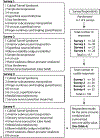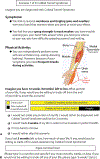Treatment of ulnar neuropathy at the elbow: cost-utility analysis
- PMID: 22835586
- PMCID: PMC7904237
- DOI: 10.1016/j.jhsa.2012.05.012
Treatment of ulnar neuropathy at the elbow: cost-utility analysis
Abstract
Purpose: The choice of surgical treatment for ulnar neuropathy at the elbow (UNE) remains controversial. A cost-utility analysis was performed for 4 surgical UNE treatment options. We hypothesized that simple decompression would emerge as the most cost-effective strategy.
Methods: A cost-utility analysis was performed from the societal perspective. A decision analytic model was designed comparing 4 strategies: (1) simple decompression followed by a salvage surgery (anterior submuscular transposition) for a poor outcome, (2) anterior subcutaneous transposition followed by a salvage surgery for a poor outcome, (3) medial epicondylectomy followed by a salvage surgery for a poor outcome, and (4) anterior submuscular transposition. A poor outcome when anterior submuscular transposition was the initial surgery was considered an end point in the model. Preference values for temporary health states for UNE, the surgical procedures, and the complications were obtained through a time trade-off survey administered to family members and friends who accompanied patients to physician visits. Probabilities of clinical outcomes were derived from a Cochrane Collaboration meta-analysis and a systematic MEDLINE and EMBASE search of the literature. Medical care costs (in 2009 U.S. dollars) were derived from Medicare reimbursement rates. The model estimated quality-adjusted life-years and costs for a 3-year time horizon. A 3% annual discount rate was applied to costs and quality-adjusted life-years. Incremental cost-effectiveness ratios were calculated, and sensitivity analyses performed.
Results: Simple decompression as an initial procedure was the most cost-effective treatment strategy. A multi-way sensitivity analysis varying the preference values for the surgeries and a model structure sensitivity analysis varying the model assumptions did not change the conclusion. Under all evaluated scenarios, simple decompression yielded incremental cost-effectiveness ratios less than US$2,027 per quality-adjusted life-year.
Conclusions: Simple decompression as an initial treatment option is cost-effective for UNE according to commonly used cost-effectiveness thresholds.
Type of study/level of evidence: Economic and Decision Analysis III.
Copyright © 2012 American Society for Surgery of the Hand. Published by Elsevier Inc. All rights reserved.
Figures






References
-
- Shin R, Ring D. The ulnar nerve in elbow trauma. J Bone Joint Surg 2007;89A:1108–1116. - PubMed
-
- Bartels RH, Menovsky T, Van Overbeeke JJ, Verhagen WI. Surgical management of ulnar nerve compression at the elbow: an analysis of the literature. J Neurosurg 1998;89:722–727. - PubMed
-
- Caliandro P, La Torre G, Padua R, Giannini F, Padua L. Treatment for ulnar neuropathy at the elbow. Cochrane Database Syst Rev 2011;2:CD006839. - PubMed
-
- Macadam SA, Bezuhly M, Lefaivre KA. Outcomes measures used to assess results after surgery for cubital tunnel syndrome: a systematic review of the literature. J Hand Surg 2009;34A:1482–1491, e5. - PubMed
Publication types
MeSH terms
Grants and funding
LinkOut - more resources
Full Text Sources
Research Materials

